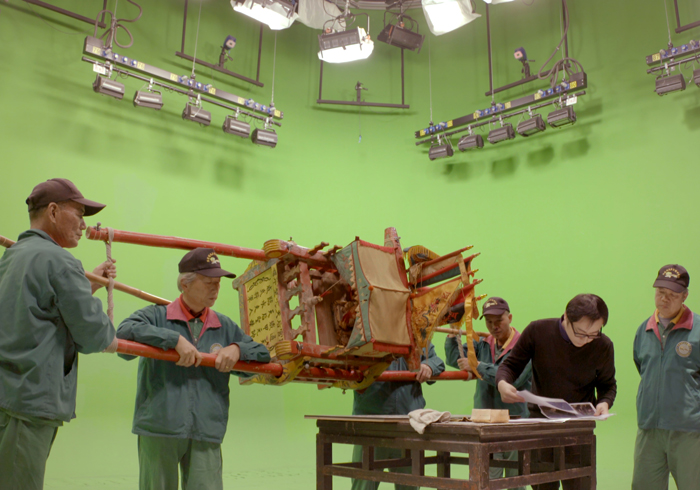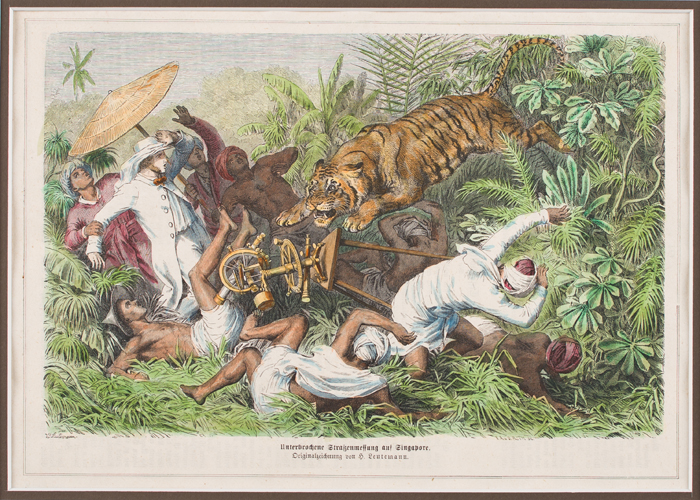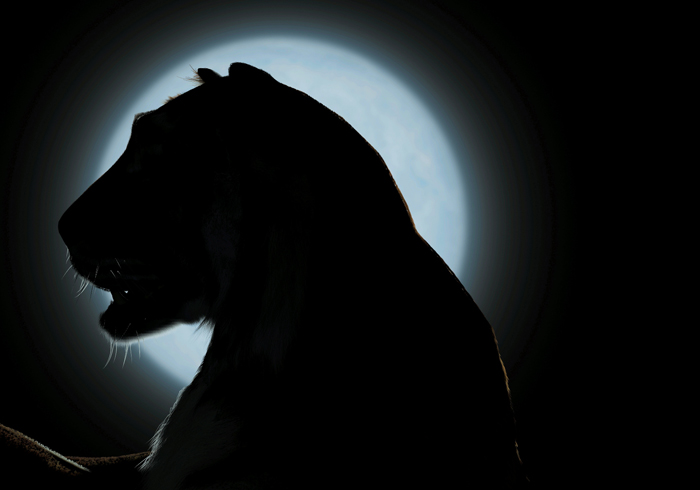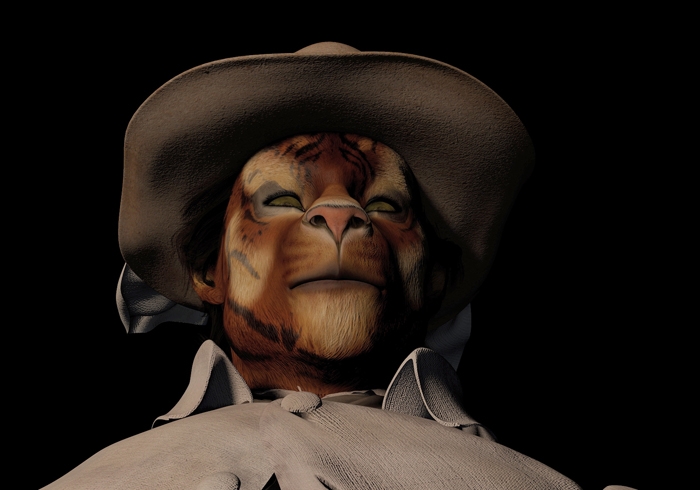What, precisely, do we mean when we talk about ‘medium’ and ‘media’? The answer is far from obvious. In fact there turns out to be considerable multivalence in the concepts. Art history and media theory, for example, do not operate with the same understanding of the terms: in art history, ‘medium’ might refer to a genre of art and the materials in which it is executed; in media theory, the concept extends variously to technological, cultural, social and even psychological phenomena.
And yet, in our hypermediated present, the question of mediation and what it means is fundamental: mediation is everywhere and seemingly encompasses everything.
At the same time, and in spite of this, it has irretrievably lost any sense of innocence. We are all too aware that all acts of mediation are potentially fraudulent, as a result of which they are subject to ongoing scrutiny and permanent doubt. One might even say that the relation of modernity to technologies of mediation is schizophrenic: on the one hand, modernity purges the world of its manifold rituals of mediation in the name of rationality and science; on the other, it leads to the proliferation of technologies of mediation, of which our dematerialised digital age is but the latest symptom.
A distinction between ‘human’ and technological media has persisted since the latter’s rise to prominence during early modernity. How do we think these poles together? At times there are points of tension between them, and one of these comes in the form of shamans and other humans who act as mediums. How such humans, but also entire masses, especially under the influence of ‘mass media’, come to act as ‘mediums’ themselves has posed a great riddle to modern knowledge, simply because the channels of transmission – what goes on in such instances between bodies and minds – remain somewhat mysterious and difficult to rationalise. Hence the wider phenomena of what could be called ‘social mediality’ (the fact that our subjectivity is socially mediated) have been relegated to ‘psychology’, to the ‘unconscious’ or to an allegedly ‘primitive’, ‘irrational’ and ‘magic’ past. Mediums such as shamans, and the phenomena they embody, have become the ghosts of modernity.
The recent works of Singaporean Ho Tzu Nyen and Taiwan’s Hsu Chia-Wei endeavour to bring these ghosts back into the present. The work of both artists demands that art history engage with both the colonial foundations of modernity and the troubled relation between modern and nonmodern, human media. Against this backdrop, their works put forward an expanded notion of media: not only because it encompasses both the material and the immaterial aspects of mediation, but because it looks at how modernity is mediated ideologically.
Hsu Chia-Wei’s video installation Spirit-Writing (2016), recently shown in the 10th Taipei Biennial, is the second work that the artist has devoted to a frog deity, allegedly born in a small pond more than 1,400 years ago in Jiangxi, China, and whose original temple, in Wu-Yi, was destroyed during the Cultural Revolution. As a result, Marshal Tie Jia, as the deity is named, was forced to migrate, eventually settling on an island in the Taiwan Strait. There, it has continued to communicate with local villagers via a divination ritual that involves the former carrying a divination chair, through which the Marshal makes his declarations both in writing (in Chinese characters) and through knocking sounds. Hsu’s work consists of a performance of this ritual, recorded in a ‘green room’ equipped with multiple cameras and sensors for the purposes of motion capture. The story of the displacement of the deity is thus mirrored in the technological setup, which enables de- and recontextualisation. The sensors and cameras capture the movements of the divination chair, and place it in the abstract Cartesian space of a 3D grid. Crucially, the villagers that carry the structure are left out of this transposition.
So what does it mean for a frog deity to be given a home in a temple reconstructed as 3D simulation?
In the session, Hsu explains the process of making Spirit-Writing to the deity, and interrogates it about the shape of the destroyed, original temple, which the artist then also reconstructs as a wireframe model. This simulation is shown simultaneously with the greenroom performance, but on the opposite side of the screen, which is placed in the centre of the exhibition space. While one side documents the divination ritual, where the villagers as well as the artist engage with the Marshal, the other side shows the transposition of deity and temple into a virtual space of digital coordinates. It is as if the simulation also presents a quasi-spiritual counterpart, the ‘other world’, in which the deity might reside, and in which lost landscapes and a lost past can be reconstructed and reclaimed. The digital space here acts as a refuge for the victims of modern forms of iconoclasm in which they are consequently displaced rather than destroyed.
There is, however, in the 3D simulation, a strange conflation of the ‘uncanny’, ghostlike levitation of the spastically moving divination chair and the vivid sense of uprootedness and abstraction that the object floating in the 3D rendering transmits. To understand how this conflation both annuls and accelerates the difference between digital media and spirit media, it is worth looking into the ‘green screen’ technique that is used by Hsu to effect the displacement.
Green screen is a generic technique used in film to create a homogeneous background for a scene that, in the editing room, can be replaced with a different image. It is thus a technique of extraction, severing a thing from its milieu or environment, a figure (or motif) from its (back)ground. It allows the placement of such a figure in whatever desired new context, milieu or environment. It might therefore be referred to as the paradigmatic modern image-technology, mirroring modernity’s powers of displacement. It also renders the relationship between figure and ground inherently problematic. Indeed, it can be elevated to an allegory of the ontological upheaval that is modernity, an allegory of the broken instrumental link between ‘figure’ and ‘ground’. ‘Ground’ ceases to serve as a guarantor of a primordial stability, and loses its ‘natural given-ness’, which once tied each ‘spirit’ to a certain context and place. This is perhaps the most fundamental sentiment of modernity: the loss of ground, the alienation from the environment. And it is this broken link that exposes our existence as mediated. To bring mediation to the fore – to expose it – is thus the teleology of modernity.

So what does it mean for a frog deity to be given a home in a temple reconstructed as 3D simulation? On the one hand, it appears as if the deity is trapped in a representation that has firmly entrenched modern conceptions of Cartesian, abstract space in which discrete bodies move without affecting each other. This Cartesian space is itself emblematic of modernity and its rationality; itself a form of mediation that makes all spaces commensurable, it creates a space that is projected as stripped of mediation. If we understand the 3D simulation as an exile for the frog deity ‘medium’, then it is also an enclosure: the frog deity’s mediality entrapped and neutralised in a Cartesian grid. This rational grid can be diametrically opposed to an understanding of space as relational and performative, brought into existence by the very bodies that inhabit it. Such is the space that unfolds in the interactions on the documentary side of Hsu’s screen, the one on which the artist interacts with the villagers and the deity itself. Together, the green screen and the 3D simulation on the respective sides of the screen seem to suggest that spirits have become placeless, and hence their figuration, the form in which they might become articulated, has become uncertain. To understand this uncertainty as potential, as an ontological opening, rather than to mourn its arrival and to seek to recover a ‘lost ground’, is perhaps the unique challenge of modern aesthetics and politics.
Ho Tzu Nyen is similarly concerned with the figuration of spirits and ghosts, and, more particularly, the histories of the tiger in the Malay world. At the moment tigers are driven to near extinction in nature, they leap into the imaginary of modernity: as symbols of national power, military might and economic development. As a recurring ghost, they bind the hypermodern present to the colonial and precolonial past. In 2014, Ho produced an acclaimed theatre piece titled Ten Thousand Tigers and, in the wake of that, several videoworks and installations, in addition to lectures and texts. The latest of these works is a two-screen video installation (which also encompasses aspects and props of the theatre piece), titled One or Several Tigers (2017), an expansion of the earlier 2 or 3 Tigers (2015).
In the latter, Ho treats the tiger as a medium that channels histories that have been silenced by modernisation, which have been occluded by modern ideologies and rendered unliveable by the dominant logic of national identities. The tiger ‘medium’ opens the imagination towards the terrain in which society is shaped through its encounters with otherness. Mythology reflects their status as ‘liminal’ animals, closely related to the human community, and yet clearly outside of it. Exploring these histories, Ho’s work pays particular tribute to stories of ‘weretigers’. In Malay cosmology, weretigers communicated with the world of the ancestors and spirits. For Ho, the figure of the weretiger in the twentieth century comes to mediate the repressed of colonial modernity. It thus allows us to grasp forces that shape a society and its cultural imaginary, particularly with respect to histories of violence and erasure.

One or Several Tigers takes its cue from a lithographic print titled Road Surveying Interrupted in Singapore, which dates from the 1860s and was executed by German illustrator Heinrich Leutemann. Ho’s work expands on this image through narrativisation and a transposition of its iconography into the present. The original print shows George Drumgoole Coleman, Government Superintendent of Public Works and Land Surveyor of Singapore for the British Empire during the 1830s, and his convict assistants (Coleman was also in charge of the island’s prisons and their convict workforce) being attacked by a tiger, which is leaping onto a theodolite (an instrument used for topographic surveying). The lithograph depicts the ‘primal scene’ of colonialism, the opening up of the ‘wilderness’ and the confrontation between a savage nature and a rational technology.
This scene is the initial step in a chain of abstractions that allow modern forms of administration to act on local realities at a distance, and thus profoundly transform and ‘unground’ the local along with its ecologies and hierarchies. Groundlessness is the programmatic call of Modernism. The architect Le Corbusier, for instance, demanded that modern architecture discard any of its complicity in the ‘metaphysics of land’s groundedness’, living up instead to the transformation of the land ‘from ground into an equipotential datum’. And the labour of achieving groundlessness begins with the theodolite.
The land surveyed in this picture will accommodate plantations in the future, we learn from the writings of art-historian Kevin Chua (writing on Leutemann’s image) that informs the narrative performed in Ho’s work. In the larger historical context, it was around plantations – which share roots with the modern factory regime – that an entire system of measuring and mapping, quantification and standardisation emerged, designed to organise nature and to police humans, ultimately to enshrine a global circulation of goods and abstractions (money and information of all kinds – what Bruno Latour calls ‘immutable mobiles’ – that can travel any distance without being transformed themselves). This is a circulation for which Singapore, the original ‘tiger’ state, is now seen as an emblematic hub.
In CGI we see the last glow of the difference between mathematical models and the world of transformatory experience
In One or Several Tigers, the tiger attack from Road Surveying Interrupted… is projected into a ghostly, stellar constellation rendered in CGI (computer-generated imagery), where both Coleman and the tiger, like sun and moon, or two complementary celestial ghosts, orbit each other as they transform into each other. The weretiger has become a transhistorical figure here, through which Ho is conducting what could be called a counter-survey – a survey within which the mutations of the human-tiger hybrid take measure of history.
In its early days, animated film came as close to ‘groundlesness’ as perhaps only modernist literature did. It strived towards a ‘zero point’ of utopian anarchy, the animated linedrawing being capable of morphing freely, taking no ontological divisions and frames for granted. In this, early modernists realised a critique of class and paradigms of subjective expression, as they saw nothing less than the ‘chance to return to the drawing board of social formation’ (Esther Leslie, Hollywood Flatlands: Animation, Critical Theory and the Avant-garde, 2004). But the ability of the animated image to traverse the horizon of possible transformations was rather quickly inverted, under pressure of commercialisation, and turned into a tool for surveying normative perception geared towards new standards of mass production.
As forward-looking as the modernity of the animated image was, it also looked into an ‘imagined’ past, as it invoked an originary, archaic animism. Writing on Walt Disney’s early films, Sergei Eisenstein described the animated line as inherently animistic in character, invoking a mythical animal epos, while behaving like a primal protoplasm ‘skipping along the rungs of the evolutionary ladder, attaching itself to any and all forms of animal existence’ (Eisenstein on Disney, 1986, ed. Jay Leyda). Indeed what Eisenstein referred to as attractiveness – the difficulty of resisting being mimetically affected and possessed by these images, of becoming their medium – lies in the morphological ability of animations to transgress ontological boundaries, invoking the (animistic) phantasm of a total mediality, a world in which potentially everything can become a medium of everything else. And while indeed in socalled animist societies there are multiple medialities along series of actions and reactions, it is important to note that the phantas of such a total mediality allegedly existing in archaic societies was a colonial projection that emerged in the nineteenth century.
The genre and technology of animation is also an outcome and a response to categorisation, mechanisation and industrialisation, and the increasing subjection of human and animal bodies to industrial regimes of control. In this genre, the ontological partition of colonial modernity is subverted, but also symptomatically displaced. The fictionalisation of the realm of folk beliefs is thus structurally mirrored in the spectacle of the impossible rendered as mass entertainment. In animated film, an allegedly lost animism could be recovered, just as ontological designations could be transgressed, precisely to the degree that this was becoming impossible beyond the designated terrain of artistic fictions.

The representation of death is impossible in animation, because everything is reversible, as filmmaker Harun Farocki said. And the omnipotence of the disembodied camera gaze puts ‘ontological anarchy’ into an uncomfortable affinity with the militarised gaze. No death, only reconfiguration. It is a projection of a world of immanence, and Ho invokes Leibniz’s idea of animals as divine machines. But CGI might speak as much of a permanently reconfiguring capitalism that does not know how to die.
Here, the dialectics underlying modern animation is pushed to new heights: computer-generated imagery is no longer a representation that exists in friction with what it represents, but as a datamap, which can also become an ‘operational image’. Animation is not achieved as a counter-gesture or line of flight from the fixating grid, but rendered through its finest possible resolution: the moving leaves of a tree are produced by generative algorithms modelling evolution itself. There is, figuratively speaking, no more tiger that attacks the theodolite as its antithesis, but rather it is the theodolite itself that assembles the image of the tiger from countless data-points. The difference is not merely between abstraction and flesh, between safe distance and threatening proximity, eye-level encounter and actionat- a-distance. This is what makes the dominant aesthetics of CGI, and its clichés of romantic enchantments and archaic magic, so ambivalent: every ‘animated’ movement, every gesture here is inscribed into a matrix of self-learning algorithms, but in this matrix there is actually nothing possible that defies its logic, and hence, no transformation. What makes CGI images look at us so strangely is that we recognise in them this dawn, the last glow of the difference between mathematical models and the world of transformatory experience. ‘In films, there is the wind that blows and the wind that is produced by a wind machine. Computer images do not have two kinds of wind’ (Harun Farocki).
The CGI animation of One or Several Tigers is an arresting manifestation of this dialectics. The synthetic, spectral bodies of human, animal and human-animal hybrid, literally ungrounded as they float around sun and moon as if unchained from the earth, plunging backward, sideways, forward, in the cold light of undead time, as if echoing Nietzsche’s madman, who shudders with his lantern when confronted by the breath of empty space.
The relation between technical and human media has only recently begun to be interrogated by researchers, who focus on the nineteenth century and the encounter between emerging mass media and various ‘mediumistic’ practices – ranging from spirit possession to hypnosis to the dynamics of modern masses under the influence of technological media. But these investigations have touched only marginally upon the relation between modern technologies, as introduced by colonialism, and indigenous myth and beliefs. To the colonial (and, later, the modernising) gaze, nonmodern cultures typically presented themselves as a theatre of mysterious, primitive medialities, given the ubiquity of ritual and myth and of ‘wild’ transmissions. Ever since nineteenth-century modernity, ‘personal media’ such as trance or spirit media, however, were increasingly separated from ‘technical media’, just as ‘superstition’ allegedly was from ‘science’, and the phenomena of mediumism were ultimately relegated to psychology or religion. This in turn left a large void in our accounts of culture, in particular with regards to the absence of a critical language for the mediated nature of sociality and subjectivity in relation to history and technology. The degree to which modern technological media exist in continuum with the phenomena of mediumism has hence been obscured.

This void could perhaps be filled by envisioning a ‘critical mediumism’ – an interrogation of the transforming vectors and paradoxes of mediality and their embodiment in the present. A critical mediumism focuses on mediality anterior to the divisions between subject and object – through, for instance, the performative and ‘magic’ aspects of images. Contemporary art is a vantage point not only because artists are often regarded, or fashion themselves, as mediums, but also because of its modern institutional history, its position as a reserve for aberrant subject/object relations, which have turned the space of art into a possible laboratory for what I would call ‘architectures of mediality’ – through experimentation with things as signs and vice versa, dynamograms of the active and the passive, and with meta-communication about communicability. For contemporary art speaks of this modern condition, this ontological drift, the groundlessness of creation and the limits of ‘positivist ideological projects’.
Art responds to this condition by inhabiting the gap between actuality and concept, representation and experience, signs and their referents, opening a zone of ontological uncertainty and anarchic withdrawal. If art were to invert the notorious primitivism of Modernism, and were to fold the dream of originary medialities from the archaic into the present, it could account for technologies of mediation having become ubiquitous and distributed in our environment, where mediation is not a question primarily of the content of messages any more, but a question of our living in ‘primordial participation’, anterior to the division that marks our (modern) consciousness, in what Deleuze and Guattari called ‘assemblages’. And it can invoke, on the other hand, a sensibility for histories of the psyche and its transhistorical temporality, so closely linked to aesthetics, as a crossroads of mediations and embodiments. It can espouse the notion that our psyche is a medium about which (to paraphrase Henri Bergson on the body) we do not know what it can do. In a similar fashion we may say that we do not know what kind of media we are.
Modernity is therefore also the name given to the quasi-mythical experience: without anchor in any definite, stable reference, the world originates in mediation, as if from the middle. Without understanding this groundlessness, modern art must remain incomprehensible and impenetrable. Contemporary art testifies to this experience, this crisis of sense: we are always already framed by media and yet our mediality is an unstable, open-ended condition. A key to modern knowledge is the realisation that we do not know what kind of media we are and can be.
From the Spring 2017 issue of ArtReview Asia
